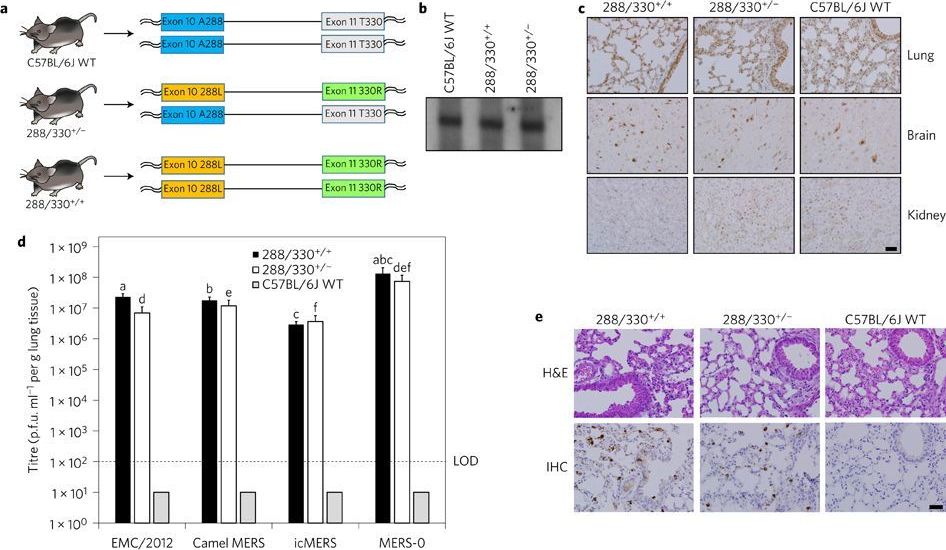A, C57BL/6J mice were genetically engineered using CRISPR–Cas9 genomic editing to encode 288L and 330R in mDPP4 on one chromosome (heterozygous, 288/330+/−) or on both chromosomes (homozygous, 288/330+/+). b, Northern blot of mDPP4 mRNA expression. c, Immunohistochemistry (IHC) of mDPP4 protein in the lungs, brain and kidneys of individual C57BL/6J wild-type (WT), 288/330+/− and 288/330+/+ mice. d, Viral titres for MERS-CoV at 3 days post-infection from C57BL/6J WT, 288/330+/− and 288/330+/+ (all n = 4) mice infected with 5 × 105 plaque-forming units (p.f.u.) of the indicated viruses. Bar graphs show means + s.d.
Figure 1: A CRISPR–Cas9 genetically engineered mouse model for MERS-CoV replication
Posted in bioengineering, biotech/medical, chemistry, genetics, neuroscience
